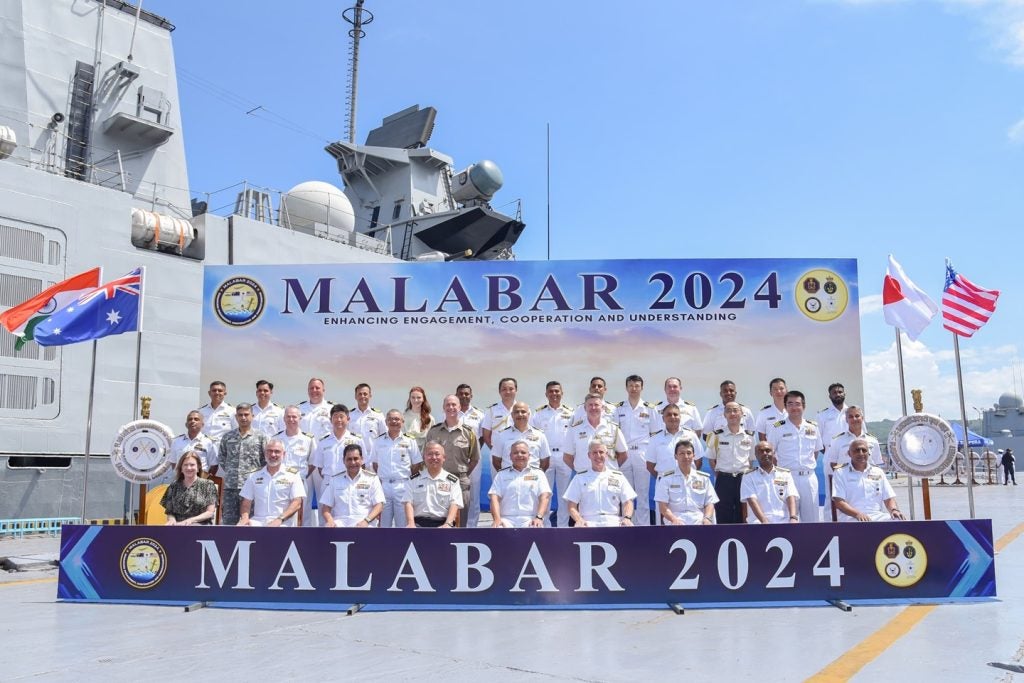The 28th edition of the multi-national maritime exercise Malabar has officially commenced aboard the Shivalik-class stealth multi-role frigate INS Satpura in Visakhapatnam, India.
Malabar started in 1992 as a bilateral exercise between the Indian and the US. It has since evolved into a key maritime engagement that now includes participation from Japan and Australia.
Malabar 2024 is set to unfold in two phases, encompassing both harbour and sea-based activities. It will continue until 18 October 2024.
This year's exercise has drawn participating ships, aircraft, and special forces from Australia, Japan, and the US, all aiming to strengthen maritime cooperation.
US Pacific Fleet commander Steve Koehler said: “I’m fired up to be here today with my counterparts as our navies train together in the Indian Ocean to strengthen our combat readiness, maritime integration, and interoperability.
“Malabar is a great example of a combined team operating together in order to deter conflict and reinforce our shared commitment to a free and open Indo-Pacific.”
Participants will engage in live weapon firings, complex surface, anti-air, and anti-submarine warfare drills, as well as joint manoeuvres.
The event will feature an array of naval assets, including frigates, destroyers, corvettes, fleet support ships, long-range maritime patrol aircraft, jet aircraft, helicopters, and submarines.
These exercises are designed to enhance the interoperability and joint operational capabilities of the participating navies.
Reflecting India's strategic vision of Security and Growth for All in the Region (SAGAR), Malabar 2024 aligns with the country's commitment to security and growth.
Australia Joint Force Maritime Component commander Jonathan Ley said: “Exercise Malabar is a significant Indo-Pacific maritime activity that deepens interoperability and collaboration among key regional partners.
“Australia has participated in previous iterations of Exercise Malabar, was honoured to host the exercise in 2023 and is pleased to participate again in 2024 as part of the Australian Defence Force’s ongoing program of regional presence and engagement.”









